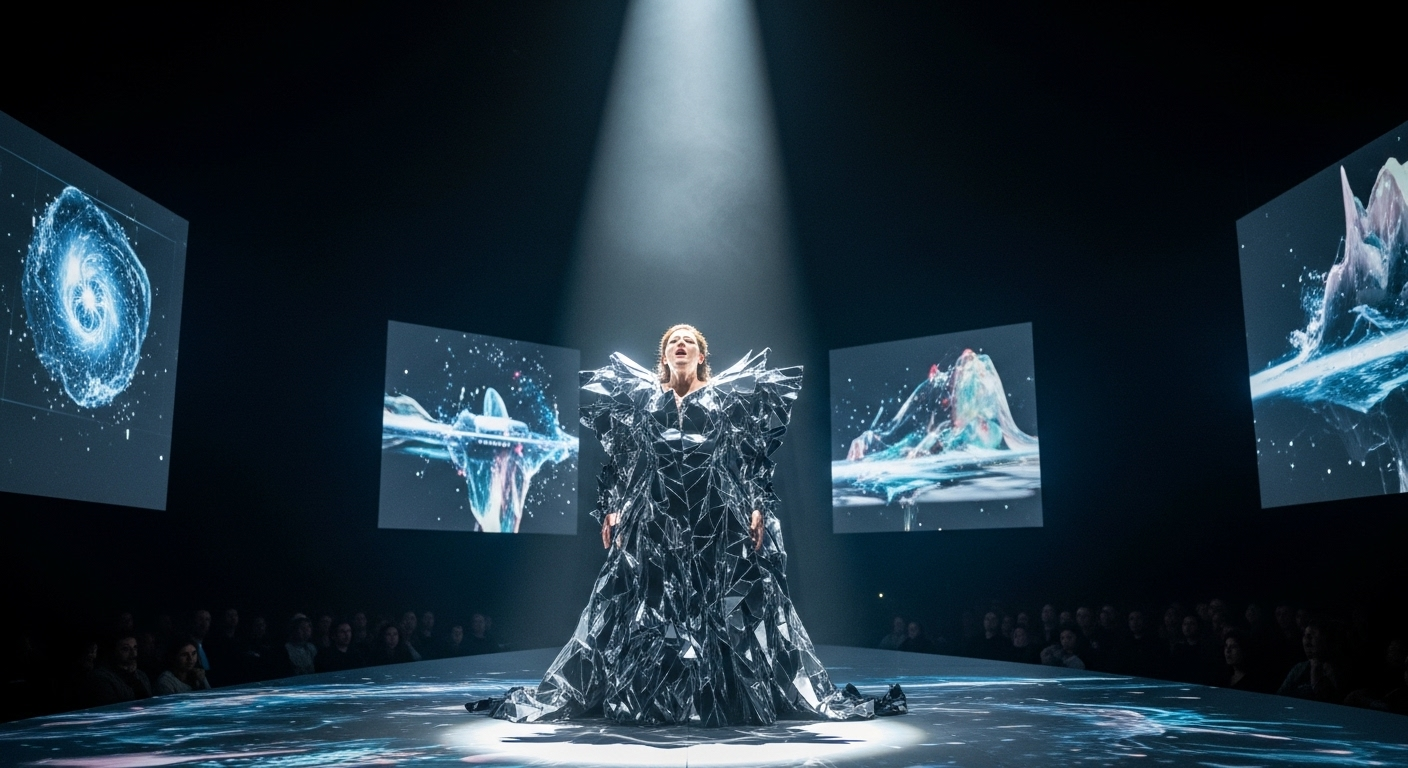Holographic Fashion: The Future of Wearable Art
In a world where technology and creativity intertwine, holographic fashion emerges as a groundbreaking medium that blurs the lines between reality and illusion. This cutting-edge fusion of digital artistry and haute couture is revolutionizing runways, red carpets, and everyday wardrobes. As designers push the boundaries of what's possible, holographic garments are transforming the very fabric of self-expression, challenging our perceptions of materiality, and redefining the future of style.

From Concept to Catwalk
The first holographic fashion pieces appeared on runways in the early 2000s, often as conceptual showpieces rather than wearable items. These early attempts utilized rudimentary projection mapping techniques to create the illusion of moving patterns on static garments. As technology improved, so did the sophistication of holographic fashion. By the 2010s, designers were incorporating micro-LED displays and advanced holographic films into their creations, allowing for more dynamic and interactive clothing.
The Technology Behind the Magic
At the heart of holographic fashion lies a complex interplay of cutting-edge technologies. Modern holographic garments often employ a combination of flexible OLED displays, advanced projection mapping, and smart fabrics embedded with photonic crystals. These elements work in concert to create the illusion of three-dimensional images floating on or around the wearer. Some designs even incorporate motion sensors and AI algorithms, allowing the garments to respond to the wearer’s movements or environmental stimuli.
Cultural Impact and Celebrity Adoption
Holographic fashion has quickly captured the imagination of celebrities and influencers, who see it as a way to make unforgettable statements on red carpets and at high-profile events. Music artists have been particularly quick to embrace the technology, incorporating holographic elements into their stage costumes to create mesmerizing visual spectacles during performances. This celebrity endorsement has helped to propel holographic fashion from a niche concept to a mainstream fascination, inspiring countless viral moments and social media trends.
Challenges and Ethical Considerations
While the potential of holographic fashion is immense, it’s not without its challenges. The technology required to create truly dynamic holographic garments remains expensive and energy-intensive, limiting its accessibility to the average consumer. There are also concerns about the environmental impact of producing and disposing of the electronic components used in these high-tech clothes. Additionally, questions have been raised about privacy and consent, particularly when it comes to garments that can display changeable images or messages in public spaces.
The Future of Holographic Couture
As technology continues to advance, the possibilities for holographic fashion seem limitless. Researchers are already working on developing more sustainable and energy-efficient holographic materials, while designers are exploring ways to integrate holographic elements into everyday wear. The potential applications extend beyond fashion into fields like healthcare (for dynamic wound dressings) and sports (for real-time performance feedback on athletic wear). As the line between the digital and physical worlds continues to blur, holographic fashion stands poised to redefine not just what we wear, but how we interact with our clothing and express our identities in an increasingly connected world.





